- Official name: Mount Jungfrau
- Location/Address: 3823 Lauterbrunnen, Switzerland
- Height: 4158 m
- Age: 20-40 million years
- Rock formation: Old granite, schist, gneiss
Mount Jungfrau is a mountain in the Bernese Alps of Switzerland. It is the third highest mountain in the Alps, after Mont Blanc and Monte Rosa, with an elevation of 4,158 meters (13,642 feet). Jungfrau means "maiden" in German, and the mountain is so named because of its white, snow-capped peaks.
In this explainer, let's learn more about Mount Jungfrau: its features, facts and topography .
While it can be confusing to distinguish Mount Jungfrau from Jungfraujoch, there is a difference between the two. Here's how to tell them apart:
Mount Jungfrau is a 4,158-meter (13,642-ft) peak in the Bernese Alps of Switzerland. It's one of the most recognizable mountains in the world, thanks to its distinctive pyramid shape and its prominent position overlooking the Lauterbrunnen and Grindelwald valleys.
Jungfraujoch, on the other hand, is a glacier saddle, or ridge, connecting the Jungfrau and the Monch mountains of the Bernese Alps. At a height of 3,463 meters above sea level, the saddle is called the ‘Top of Europe’ and is served by the Jungfrau railway, the highest railway in all of Europe. It runs for 9 kilometers from the Kleine Scheidegg station.
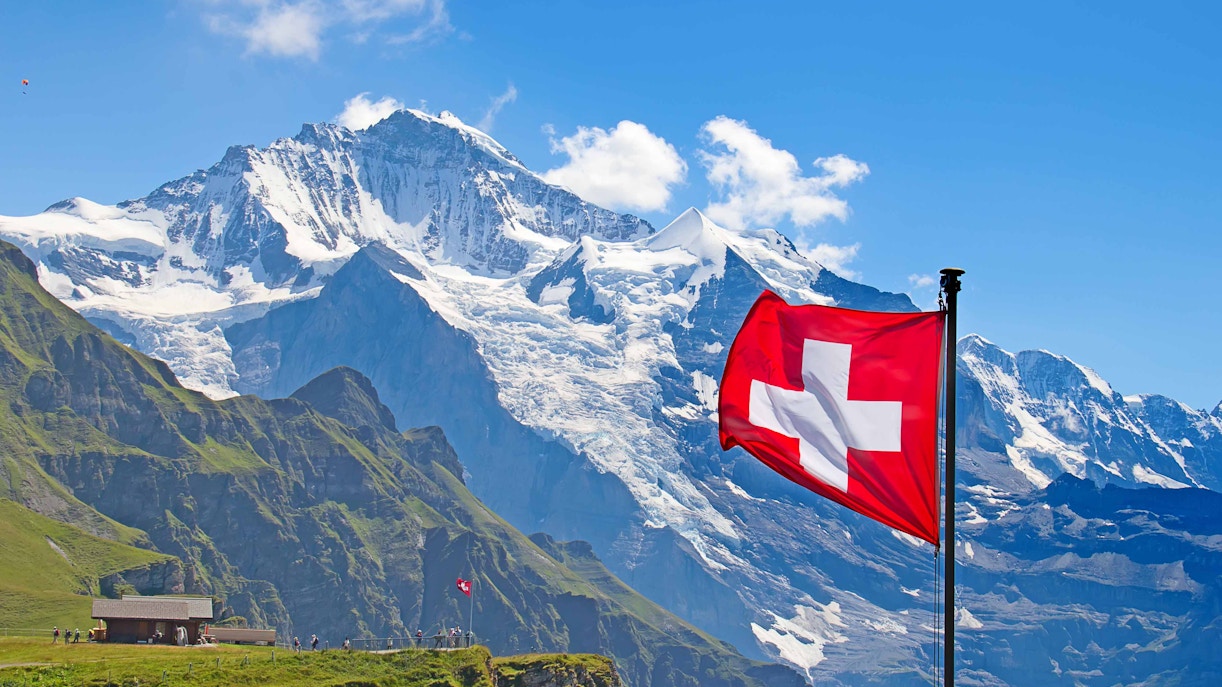
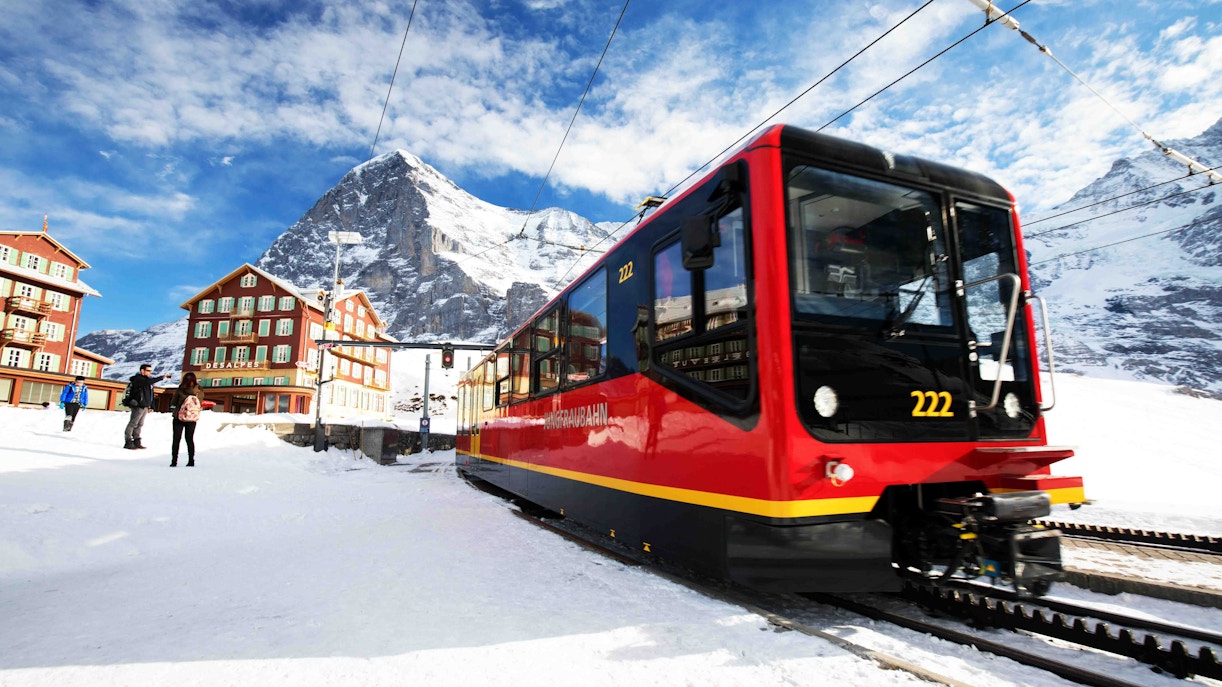
Only seasoned hikers and mountaineers are advised to attempt climbing Mount Jungfrau's steep rock faces. However, you can take the Jungfraujoch railway and explore the multiple activities available to you at Jungfraujoch. This saddle is situated at a lower altitude, at 3454 m above sea level.
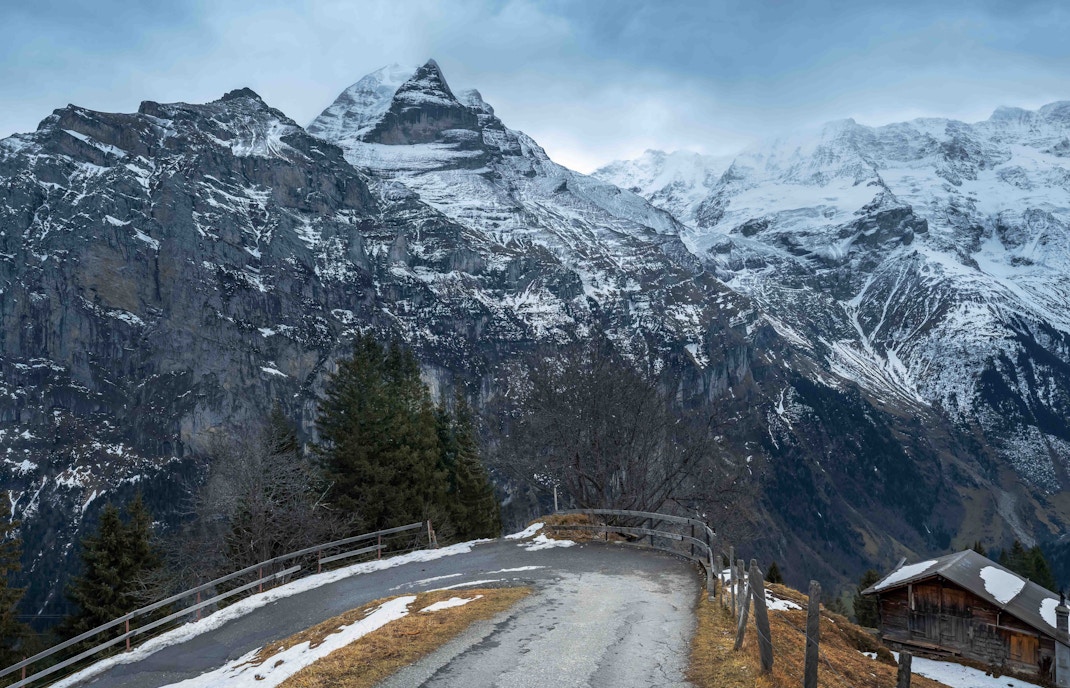
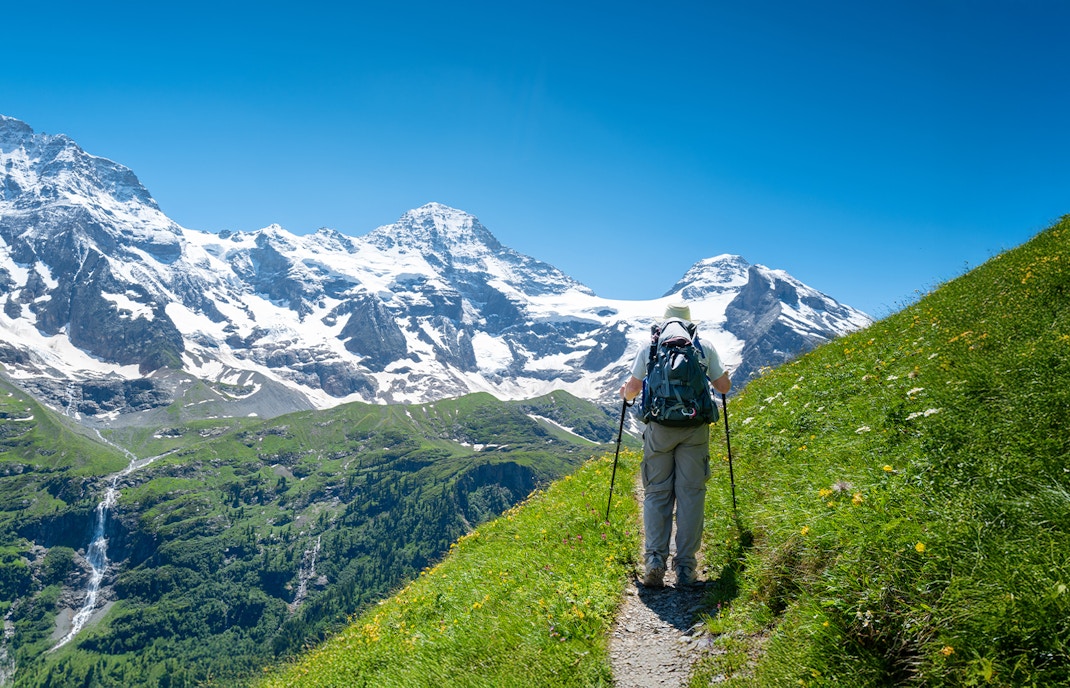
These hikes are recommended for people who have previous experience. As both the weather and terrain can be challenging to navigate, climbing Mount Jungfrau is advised to be undertaken only under conditions of good health and fitness.
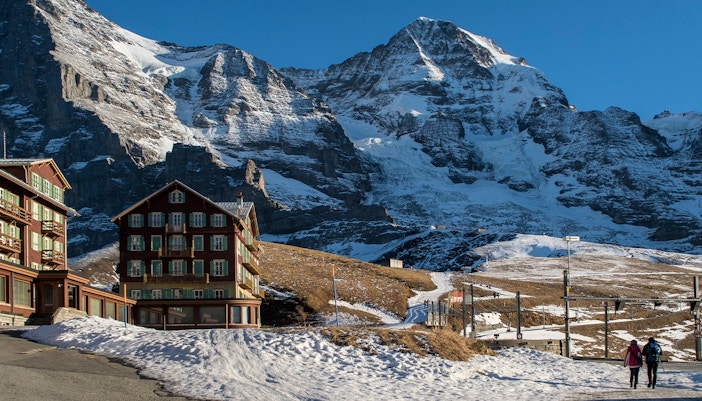
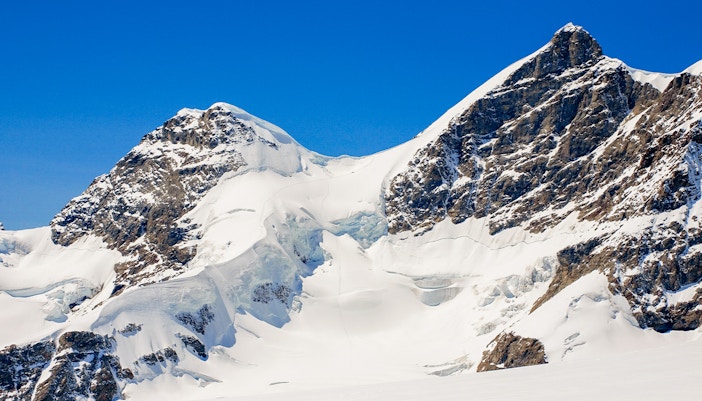
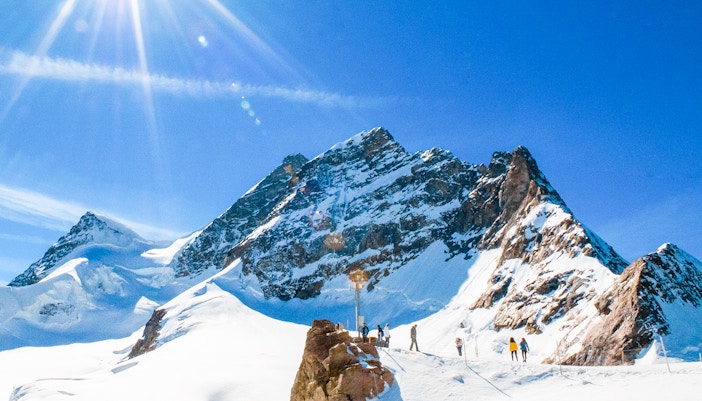
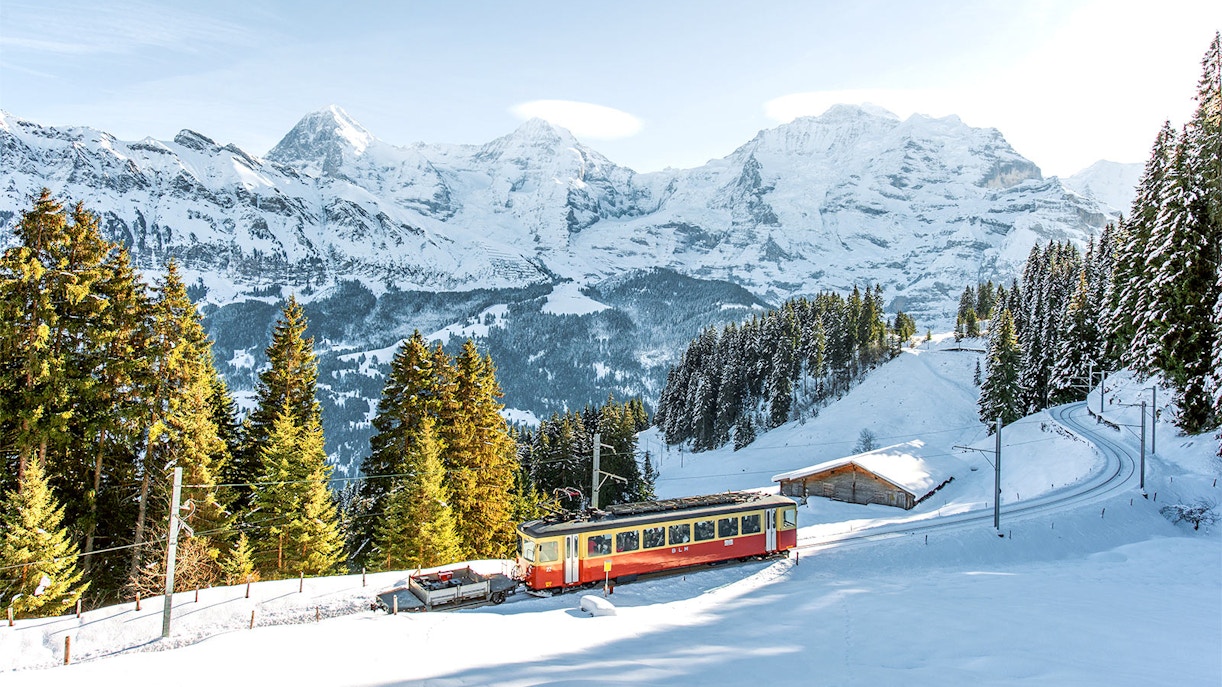
Mount Jungfrau’s dramatic rise is the result of millions of years of Earth's restless power. Around 35 to 50 million years ago, the African and Eurasian tectonic plates collided, causing layers of ancient seabed sediment—limestone, shale, and sandstone—to crumple, fold, and thrust skyward. This monumental clash birthed the entire Alpine range, with Jungfrau emerging as one of its glittering jewels.
Over countless ice ages, glaciers sculpted the mountain’s sharp edges, deep cirques, and steep valleys. Erosion from water, ice, and wind has further refined the peak’s classic alpine silhouette, creating a natural cathedral of stone and snow.
The geology of Jungfrau tells a story not just of violent beginnings, but of constant, patient artistry—a masterpiece millions of years in the making, still evolving before our eyes.
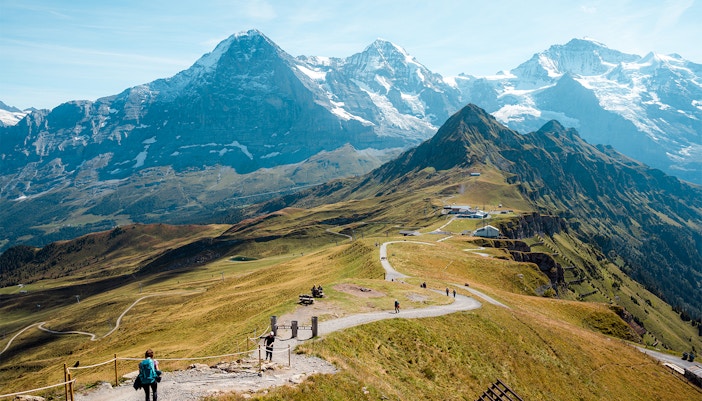
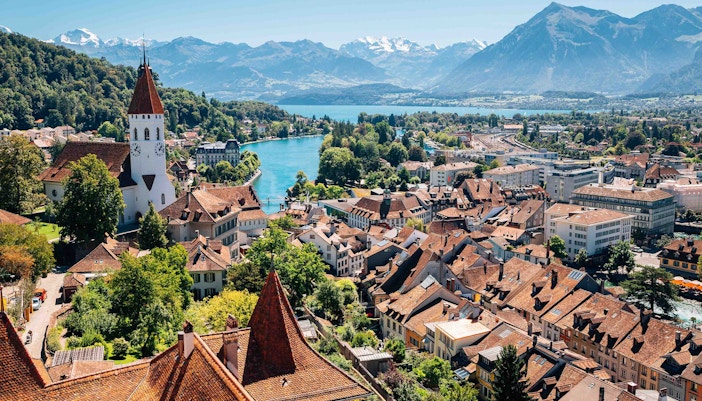
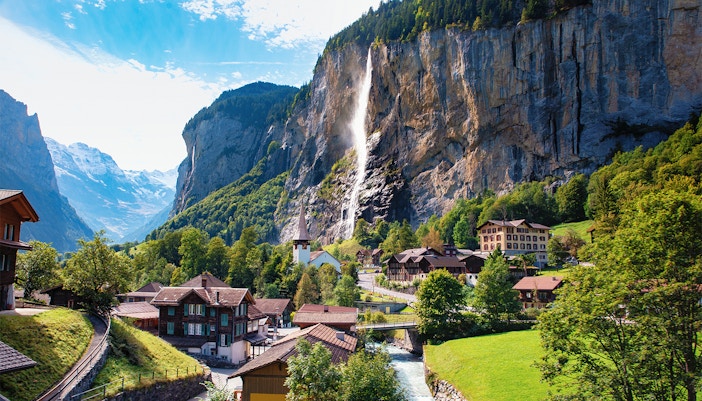
Mount Jungfrau is a mountain peak in the Bernese Alps of Switzerland. Mount Jungfrau, Mönch, and Eiger are collectively known as the "Big Three" of the Bernese Alps. Standing tall at an impressive height of 4,158 meters (13,642 feet), Jungfrau holds the distinction of being the third highest mountain in the Alps, surpassed only by Mont Blanc and Monte Rosa.
Although used interchangeably, there is a difference between Mount Jungfrau and Jungfraujoch. Jungfraujoch is a glacier saddle, 3,454 meters above sea level, connecting the Jungfrau and the Monch mountains of the Bernese Alps. Mount Jungfrau is the mountain itself, into which the Jungfraujoch railway has been carved. The altitude of Mount Jungfrau is 4158 m.
Since Mount Jungfrau is a natural landmark, you don't need to pay to visit it. However, if you are undertaking activities on the mountain like riding the Jungfraujoch railway, going on hikes, etc. you will need to purchase tickets for those experiences.
Jungfrau is pronounced as 'Yoong-frow'.
Jungfraujoch is famous for being the highest accessible railway in Europe. It is also home to the Sphinx Observation Deck, the Ice Palace, the Snow Park, the Lindt Swiss Chocolate Heaven and other sub attractions.
Jungfraujoch is located on the upper part of the Aletsch Glacier, and is the ridge connecting the Jungfrau and Monch mountains. It's situated on the boundary between the cantons of Bern and Valais, and halfway between the towns of Interlaken and Fiesch.
Mount Jungfrauj is open to visitors year round. The Jungfraujoch railway is also open to tourists throughout the year, and the train runs between 8 AM 6 PM daily.
The best time to visit Mount Jungfrau is between April and May when the weather starts getting warmer. You can go hiking and explore the Alpine outdoors. There are fewer crowds and tickets to experiences are also cheaper.
That depends on what you'd like to do on your visit. If you want to ride the railway, a visit to Jungfraujoch would take around 5-6 hours (including travel time). This also accounts for time set aside for exploring all its attractions.
Visitors must wear warm clothes, thick jackets, thick socks, comfortable walking shoes with a good grip. Carrying sunglasses is also strongly recommended as the Alpine glares can be harsh.
While the mountain itself isn't wheelchair friendly, the Jungfraujoch railway and all its attractions are wheelchair accessible.
From Grindelwald: Jungfraujoch Top of Europe Round-Trip Tickets
From Interlaken: Jungfraujoch Top of Europe Round-Trip Train Tickets
From Lucerne/Zürich/Geneva: Jungfraujoch Guided Day Tour
From Lauterbrunnen: Jungfraujoch Top of Europe Round-Trip Train Tickets